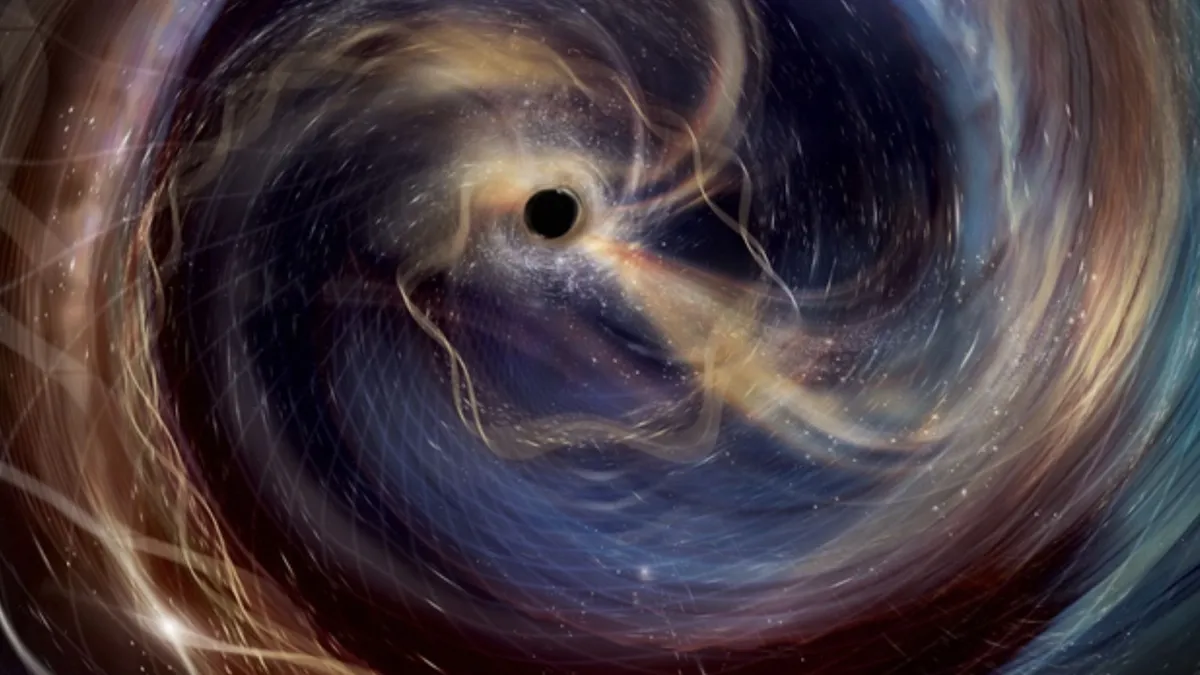
Recent findings by scientists have revealed the existence of two pairs of merging black holes, with the larger black holes in each merger believed to be rare second-generation veterans stemming from previous collisions. This groundbreaking research, published on October 28 in The Astrophysical Journal Letters, highlights the unusual behavior of these black holes, which was detected through ripples in space-time known as gravitational waves.
The primary clues indicating these black holes’ unique characteristics were twofold. In both mergers, the larger black hole exhibited rapid spinning and was significantly more massive than its smaller partner, which it ultimately consumed. These remarkable insights were gathered through the collaborative efforts of the LIGO-Virgo-KAGRA Collaboration, a network of gravitational-wave detectors positioned around the globe, dedicated to observing significant cosmic events such as black hole mergers and neutron star collisions.
According to study co-author Stephen Fairhurst, a professor at Cardiff University in the U.K. and spokesperson for the LIGO Scientific Collaboration, these findings provide compelling evidence that the larger black holes were formed from previous black hole mergers.
The research focused on two recently detected black hole mergers that occurred just a month apart. By analyzing the gravitational wave signatures from these events, scientists were able to deduce essential information regarding the mass, rotation, and distances of the involved black holes. The first event, designated as GW241011, occurred on October 11, 2024. This merger involved two black holes measuring six and 20 times the mass of the sun, located approximately 700 million light-years away from Earth. Notably, the larger black hole in this merger was identified as one of the fastest-rotating black holes ever documented.
The second merger, known as GW241110, was detected on November 10, 2024, featuring black holes with masses of eight and 17 times that of the sun. This event was significantly more distant, occurring 2.4 billion light-years from our planet. Remarkably, the larger black hole in this merger was spinning in a direction opposite to its orbit, a phenomenon that has never been observed before.
Both mergers displayed unique characteristics, including the fact that the larger black hole in each instance was nearly twice the size of its smaller counterpart. Additionally, the unusual spinning behavior of these larger black holes set them apart from the hundreds of other mergers detected through gravitational waves since the historic first detection by LIGO in 2015. The study suggests that these larger black holes likely formed through a process known as hierarchical merger, which typically occurs in dense cosmic environments such as star clusters, where black holes frequently come into close proximity.
Astrophysicist Jess McIver from the University of British Columbia expressed excitement about the findings, stating, “This is one of our most exciting discoveries so far. These events provide strong evidence that there are very dense, busy pockets of the universe driving some dead stars together.”
Apart from the implications of discovering potential second-generation black holes, scientists noted that these two mergers further validated the laws of physics predicted by Albert Einstein over a century ago. The events are also enhancing our understanding of elementary particles. For instance, GW241011 produced a distinct signal that enabled scientists to observe the deformation of the larger black hole as it spun, a phenomenon attributed to its rapid rotation. This gravitational wave signature aligned with theoretical predictions from both Einstein and mathematician Roy Kerr concerning rotating black holes.
Additionally, the same event generated a hum in the gravitational wave signal, resulting from the mass disparity between the larger and smaller black holes. This hum is analogous to the overtones produced by musical instruments, as described by the collaboration team. Such observations not only confirm Einstein's predictions but also contribute to the evolving field of astrophysics.